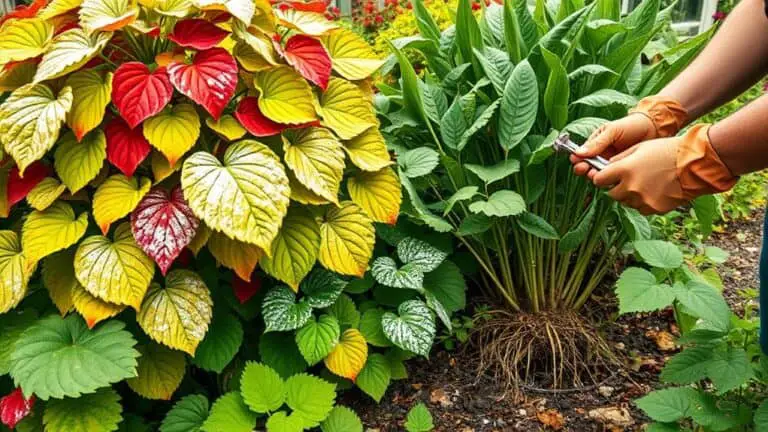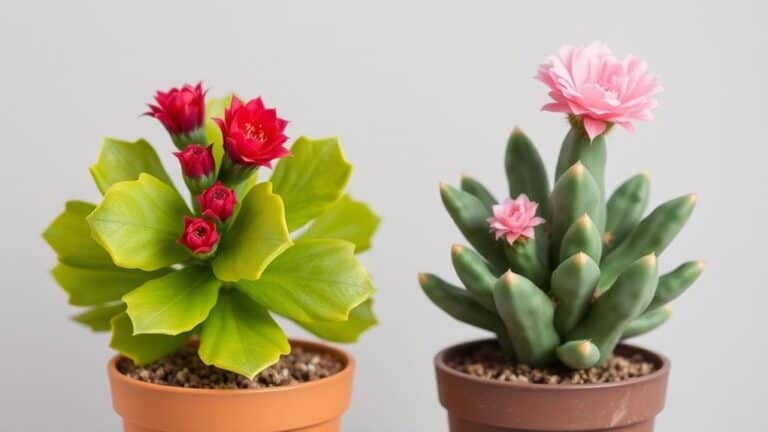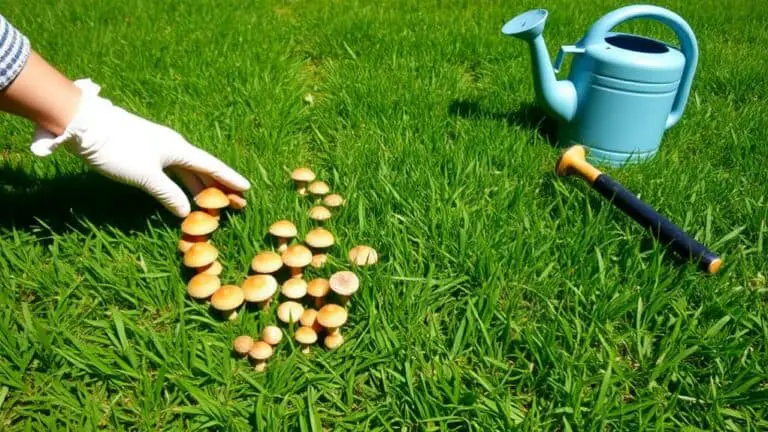Make Dandelions The Best Part Of Your Spring
As spring blossoms around us, I've found an unexpected hero in the humble dandelion. Often dismissed as a pesky weed, this plant is actually a treasure trove of nutrients and flavors. Imagine adding a crunch to your salads, a floral twist to your desserts, or even brewing a cup of caffeine-free coffee from its roasted roots. Intrigued yet? Let's explore how foraging for these vibrant plants in safe, chemical-free areas can transform your culinary creations and elevate your spring dining experience.
Dandelion Overview
The versatility of dandelions (Taraxacum officinale) never ceases to amaze me. These nutrient-rich edible plants are packed with vitamins A, C, K, and minerals like calcium and iron.
All parts of the dandelion are edible: leaves, flowers, and roots. Young leaves, especially, are less bitter and best harvested in early spring.
Historically, dandelions have been used for their medicinal properties, aiding in digestion, liver health, and appetite stimulation. Not only are they healthy, but dandelions also grow rapidly; picking one flower can lead to many new ones!
Often deemed a superfood, dandelions can add both nutrition and creativity to your meals, from fresh salads to unique desserts. They truly are a springtime wonder!
Foraging Tips
When foraging for dandelions, it's essential to pick them from safe locations, away from roads and industrial sites to avoid contamination.
I always aim for early spring harvests before the plants flower, as the younger leaves are tastier and packed with nutrients.
Remember to steer clear of areas treated with chemicals, and consider using your own yard for the safest, freshest finds.
Safe Foraging Practices
Before you plunge into foraging dandelions, it's vital to prioritize safety to guarantee what you gather is both beneficial and non-toxic.
Safe foraging practices are significant when picking these Edible Wild plants. Always harvest from areas free of chemicals, pesticides, or herbicides—your own yard or organic farms are ideal. Avoid roadsides to minimize contamination from vehicle exhaust.
The best time to pick dandelion greens is early spring before they flower, ensuring a milder taste and higher nutrient content. Use gloves to protect your skin and be mindful of the plant's life cycle to avoid overharvesting.
Ideal Harvest Locations
Foraging dandelions in ideal locations guarantees you get the most nutritious and safest plants possible.
Start in your yard or garden, where you know there aren't any harmful chemicals, pesticides, or herbicides. Avoid public areas since they're often treated with chemicals. Make sure the spot you choose hasn't been treated for at least a year.
Look for well-watered areas with plenty of sunlight—these conditions grow the healthiest and most flavorful dandelions. Steer clear of roadsides and heavily trafficked zones to avoid contamination from dirt, exhaust, and runoff.
Early spring is perfect for harvesting young dandelion leaves and buds; they're tender and less bitter.
Happy foraging!
Timing and Nutrients
Timing your dandelion harvest is crucial for maximizing both flavor and nutritional benefits. In early spring, dandelion greens are at their best, as the young leaves are tender and less bitter. Harvesting before the flowers bloom guarantees you get the ideal taste and nutrient content. Dandelion greens are packed with vitamins A, C, K, and minerals like calcium and iron, making them a nutritious choice.
Here's a quick comparison to keep in mind:
| Timing | Nutrient Content |
|---|---|
| Early Spring | High in Vitamins A, C, K |
| Before Flowering | Tender, Less Bitter |
| Young Leaves | Rich in Calcium, Iron |
| Mid-Spring | Slightly Bitter |
| Late Spring | More Bitter, Less Tender |
Edible Parts
As spring breathes new life into nature, dandelions emerge as a surprising culinary gem, with every part being edible.
I've discovered that young dandelion leaves add a fresh, slightly bitter crunch to salads, while dandelion flowers bring a unique floral flavor to dishes. You can even make dandelion wine or fry the flowers into tasty fritters.
The roots, when roasted, brew into a fiber-rich, antioxidant-filled coffee substitute. Dandelion buds, picked early in spring, transform into capers, mimicking traditional capers' flavor and texture.
- Young leaves: great raw in salads
- Older leaves: cook to enhance flavor
- Flowers: use for wine or fritters
- Roots: roast for a coffee substitute
- Buds: turn into capers
Embrace these versatile plants!
Reducing Bitterness
If you find dandelion greens a bit too bitter, don't worry, I've got some great tips to help with that!
Soaking the leaves in cold salted water overnight can really tone down their sharp taste, and blanching them in boiling salted water for a couple of minutes before plunging them into an ice bath keeps their vibrant color while making them less bitter.
Combining them with milder greens in salads or adding a touch of sweetness or savory bacon grease can also balance out their flavor beautifully.
Soaking Techniques
When it comes to making dandelion greens more palatable, nothing beats soaking them in cold salted water overnight. This simple soaking method can make the greens considerably less bitter, perfect for salads or cooking.
The process is easy and effective, and you'll notice a big difference in taste.
Here's a quick guide to get you started:
- Cold Water: Use cold water to help leach out the bitter compounds.
- Salt: Add a generous amount of salt to the water.
- Overnight Soak: Let the greens soak overnight in the refrigerator.
- Rinse: Rinse the greens thoroughly the next day to remove excess salt.
- Experiment: Try different soaking times to find your perfect taste.
Blanching Methods
Blanching dandelion greens is a fantastic method to reduce their natural bitterness, making them more enjoyable for a wider audience. You can start by blanching them in boiling salted water for two minutes, which effectively leaches out some of the bitter compounds. Immediately transferring the greens to an ice-water bath afterward will preserve their vibrant color and crisp texture.
To further minimize bitterness, try soaking the leaves in cold salted water overnight before blanching. For those sensitive to bitterness, consider multiple changes of boiling water during the blanching process. Experimenting with different blanching times can also help you find the perfect taste.
Here's a quick guide:
| Step | Duration/Tip |
|---|---|
| Boil in salted water | 2 minutes |
| Ice-water bath | Immediately after boiling |
| Overnight soak | In cold salted water |
| Multiple water changes | During blanching |
| Experiment with times | Personalize to taste |
Flavor Masking Strategies
While blanching methods can certainly tame the bitterness of dandelion greens, there are additional strategies to further enhance their flavor profile.
I've found that combining a few key techniques can make these leafy greens not only edible but delicious. Here are some effective flavor masking strategies:
- Soak Overnight: Soak dandelion leaves in cold salted water overnight to reduce their bitter taste.
- Mix with Milder Greens: Combine with spinach or arugula to balance the bitterness.
- Add Fats: Sautée with olive oil or bacon grease to cover bitter taste receptors.
- Strong Flavors: Use vinegar, garlic, or sugar to distract from the bitterness.
- Blanch and Shock: Blanch in boiling salted water for two minutes, then dunk in ice water.
Culinary Uses
As the first signs of spring emerge, dandelions offer a wealth of culinary possibilities that are both delicious and sustainable.
I love using their small leaves early in the season because they're milder and perfect for sautéing with garlic or adding to stir-fries. Their flowers are versatile too—you can fry them into tasty fritters or even make dandelion wine for a unique flavor.
Have you tried roasting dandelion roots? They make a fantastic coffee substitute that's rich in antioxidants and fiber.
Dandelion buds, picked in early spring, can be turned into tangy capers.
Incorporating dandelions into your meals not only adds exciting flavors but also promotes sustainability by using this common, nutrient-rich plant.
Salads and Dressings
Have you ever thought about adding fresh dandelion flowers to your salad?
They not only bring a burst of color but also a slightly sweet flavor that makes any salad look and taste amazing.
Pair them with a homemade dandelion vinaigrette by infusing the flowers in vinegar, and you've got a tangy, delicious dressing that takes your salad to the next level!
Fresh Flower Garnishes
Dandelions aren't just pesky weeds; they can be delightful additions to your spring salads. Fresh dandelion flowers add a vibrant yellow color and a mildly sweet, honey-like flavor to dishes.
Sprinkling their edible flower petals over salads not only enhances visual appeal but also introduces a delightful crunch.
Consider these benefits when using fresh dandelion flowers in your salads:
- Vibrant Color: Adds a pop of yellow, making your salad visually appealing.
- Flavor Enhancement: Offers a mildly sweet taste similar to honey.
- Nutritional Boost: Rich in vitamins, contributing to a healthier meal.
- Sustainability: Promotes the use of wild edibles, reducing waste.
- Creativity: Encourages experimentation with unique flavor profiles.
Tangy Dandelion Vinaigrette
One delightful way to elevate your salads is by crafting a tangy dandelion vinaigrette. Start with dandelion vinegar, which you can make by infusing dandelion flowers in vinegar. This gives your dressing a fresh, tangy kick.
Mix the dandelion vinegar with olive oil, a touch of honey, and a bit of mustard. The result is a balanced, flavorful vinaigrette.
Don't forget to toss in some dandelion leaves too. They add a unique, slightly bitter taste that pairs wonderfully with sweet ingredients. Plus, dandelion leaves are packed with vitamins A, C, and K.
Experimenting with dandelion vinaigrette is a fun way to get creative in the kitchen and make your spring salads pop with flavor and nutrition.
Preserves and Jellies
Exploring the world of dandelion preserves and jellies opens up a domain of unique culinary delights.
Have you ever tried dandelion jelly? This spread, made from bright yellow flowers, tastes like honey and is perfect on toast. To make it, you'll need about 2 cups of petals, sugar, pectin, and lemon juice, yielding 4 to 5 jars.
Dandelion syrup is another fantastic option. By simmering the flowers in water and sugar, you get a sweetener similar to maple syrup.
- Dandelion jelly: floral, honey-like spread
- Dandelion syrup: sweetener for pancakes
- Reduce food waste: use the entire plant
- Versatile: suitable for various recipes
- DIY capers: make from unopened buds
Give these creative preserves a try!
Desserts
After experimenting with dandelion preserves and jellies, let's turn our attention to the delightful domain of dandelion desserts.
Dandelion ice cream, made from infused cream and sugar, offers a unique floral flavor and creamy texture that highlights the dandelion's versatility. Imagine enjoying this on a warm spring day!
Dandelion jelly, with its honey-like sweetness, can be used as a filling in cakes or cookies, adding a delicious twist.
For a fun and crunchy treat, try making dandelion flower fritters by coating the blossoms in batter and frying them.
You can even sprinkle edible dandelion petals into your baked goods for a pop of color and sweetness.
These desserts are sure to impress at any spring gathering.
Cooking Greens
As the chill of winter fades and spring emerges, it's the perfect time to incorporate dandelion greens into your cooking. When harvested early, these greens are less bitter and packed with nutrients. Sautéeing them with garlic and olive oil can transform them into a delicious side dish.
Here's how I enjoy them:
- Blanch: Quickly reduce bitterness.
- Sautée: Enhance flavor with garlic.
- Pair: Olive oil, lemon juice, and nuts.
- Pesto: Blend into a unique sauce.
- Pizza: Use as a nutritious topping.
Dandelion greens are rich in vitamins A, C, and K, plus minerals like calcium and iron.
Beverages
When it comes to dandelions, don't just stop at the greens—consider their potential in beverages too. Roasted dandelion root makes a fantastic caffeine-free coffee substitute, rich in antioxidants and fiber.
For a revitalizing herbal option, try dandelion leaf tea by steeping fresh or dried leaves in hot water. Ever thought of making homemade dandelion soda? Just combine dandelion flowers, sugar, and a ginger bug to ferment a fizzy, delightful drink.
If you're a kombucha fan, dandelion and fennel kombucha offers a unique twist with floral notes. Finally, dandelion-infused beverages like dandelion wine bring a sweet, floral taste to your spring gatherings.
Embrace these creative options and make dandelions the star of your seasonal drinks!
Frequently Asked Questions
Are Dandelions Good or Bad for Your Lawn?
Are dandelions good or bad for your lawn? I see both sides. Dandelion benefits include soil nutrients and pollinator support. On the flip side, they can disrupt dandelion aesthetics if you prefer a uniform lawn.
Should You Kill Dandelions or Keep Them?
You shouldn't kill dandelions. Understanding dandelion benefits and debunking dandelion myths can transform your view. They're nutrient-rich, support pollinators, and improve soil health. Embrace them for culinary uses and sustainable living instead of seeing them as weeds.
What Part of the Dandelion Is Most Beneficial?
I believe the dandelion root is the most beneficial part due to its liver-supporting properties. Its nutritional profile and culinary uses, like creating a coffee substitute, make it a standout superfood in my diet.
Do Dandelions Improve Soil Quality?
Yes, dandelions improve soil quality. Their deep taproots enhance soil aeration benefits and nutrient absorption. When they decompose, they release nutrients back into the soil, promoting fertility and helping other plants thrive.
Conclusion
So, why not give dandelions a try this spring? You'll discover new flavors, boost your nutrition, and enjoy the fun of foraging. From fresh salads to sweet desserts and even unique beverages, dandelions can transform your meals into something exciting. Plus, using what nature provides is a great way to reduce waste and celebrate the season. So grab a basket, head outside, and start your dandelion culinary adventure today!






